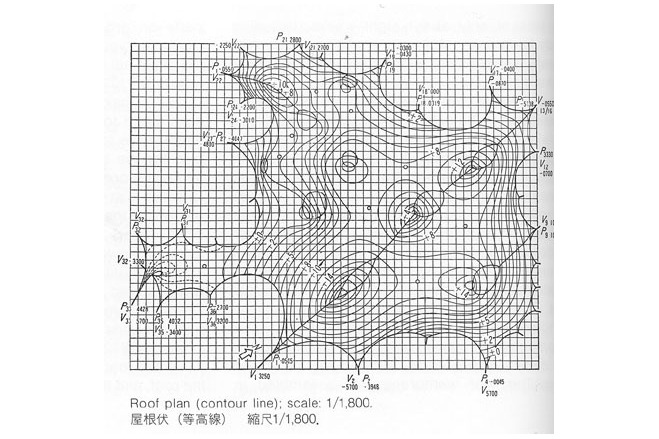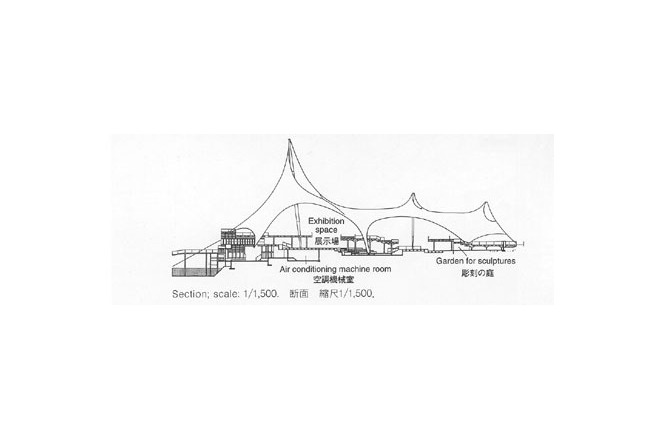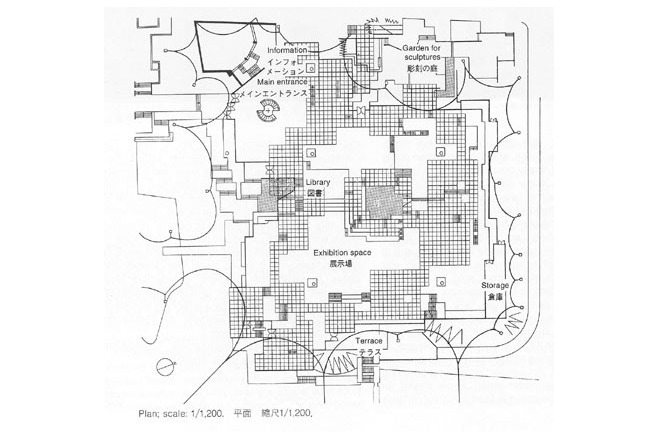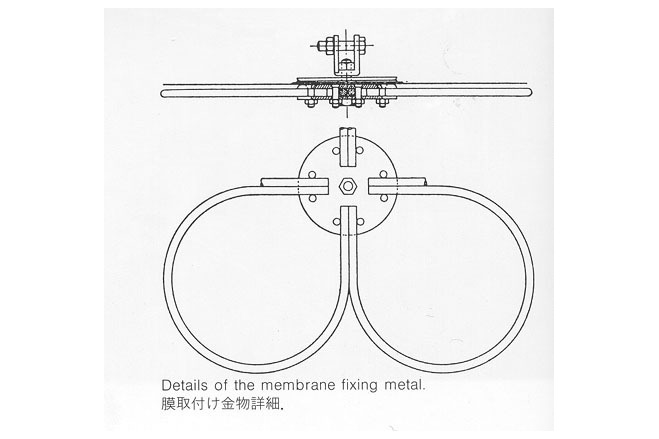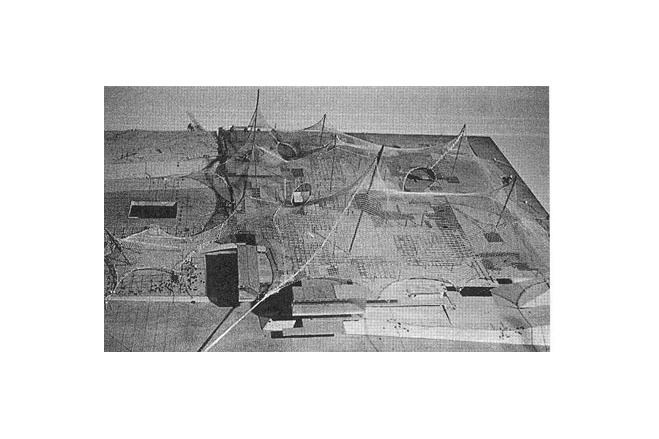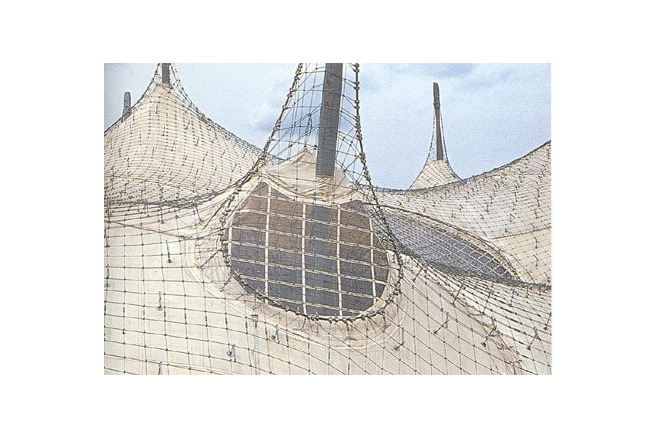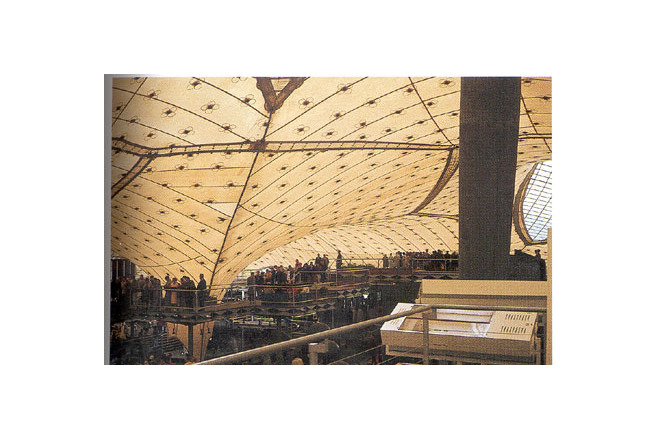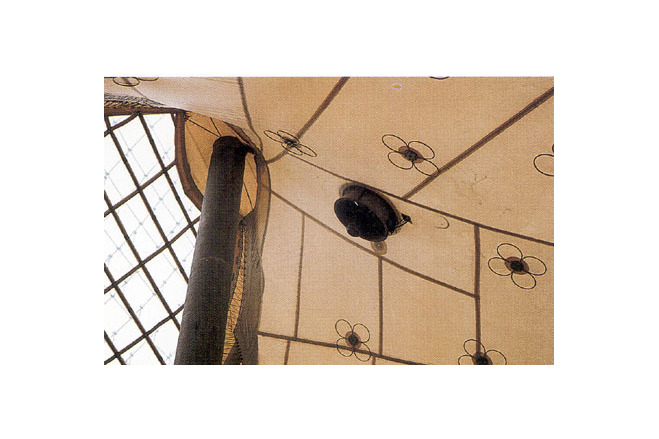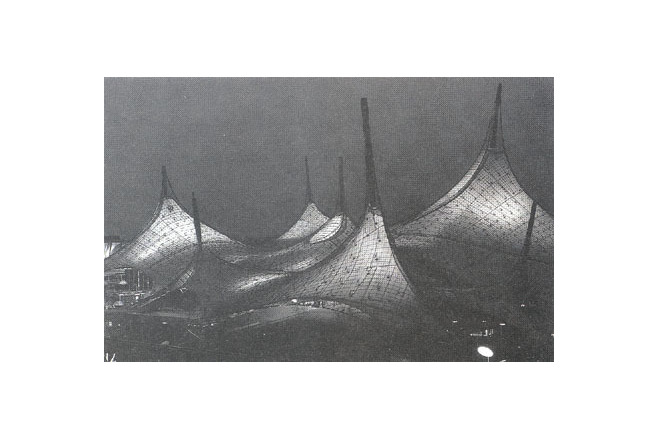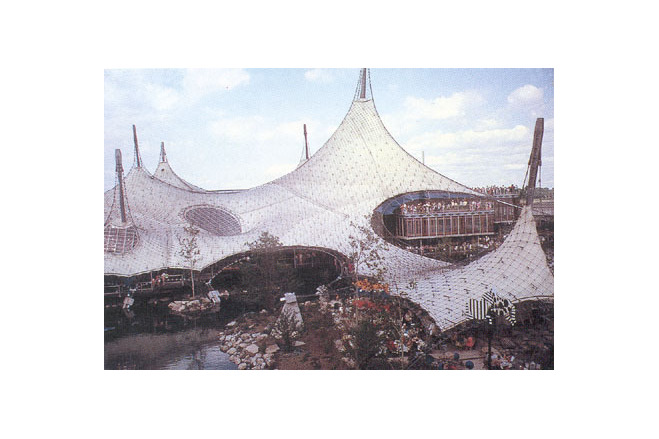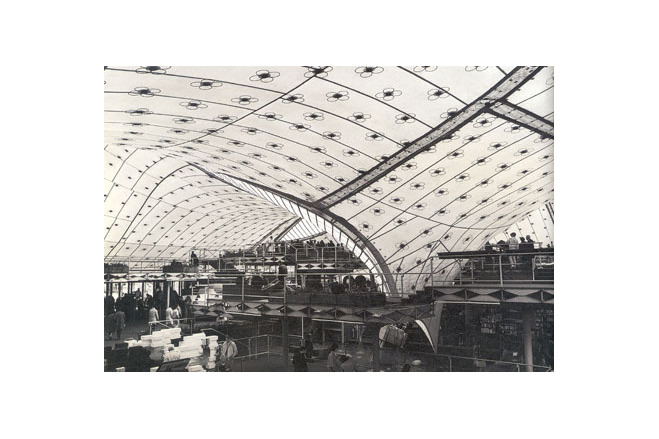Expo 1967 (Montreal): German Pavilion
General information
-
Location address
Montreal
-
Location country
Canada
-
Function of building
Exhibition
-
Degree of enclosure
Fully enclosed structure
-
Climatic zone
Temperate - cold winters and mild summers
-
Number of layers
mono-layer
Description
The motto of the world Exposition in Montreal was "Terre des Hommes" inspirated by the meaning of this theme for the intimate relationship and interdependence between mankind and earth, Frei Otto has designed, together with Rolf Gutbrod in their joint competition-winning project, an imaginative sequence of man-made landscapes, mutually overlapping and related to one another, and harmonizing with the natural setting of land and water around it. A curvacelously swinging roofscape was spread widely over a sculptured ground platform and differently raised exhibition terraces. The pavilion has been one of the architectural highlights of the Expo and, no doubt that , it was a real masterpiece of lightweight architecture.
The structural system of the prestressed 50 cm meshed steel cable net and the suspended prestressed textile membrane, a shiny white and translucent weather skin with clear eye loops, pushed up needle-like by eight mast high points and pulled down funnel-like at three low points, all of them freely placed inside an up-and down sweeping outline periphery, - creating a huge diversified interior space of almost 8000 m² covered area, open all around to the outside, which was bounded by restraint 2,25 m high wind-deflector glass walls on manifold ground flour levels (open on top for natural ventilation in summer and closed with aprons against the roof membrane for heating in winter), which was subdivided spatially by 1,25 m modular galvanized steel decks on mushroom-like branching columns in various heights, and which even sheltered in one corner two small compression stressed wooden grid shell domes for a lecture hall and its entrance foyer with an irregularly shaped ground area of almost 300m² this all together was, so to speak, the successful attempt to make a complete building to be an exhibit of its own about lightweight construction technology, presented to the international public. It was the highly telling summation of more than a decade of intensive research on forms and structure made of lightweight and widespan membranes, nets and grids and indeed, it was something like a breakthrough for a new way in architecture, now penetrated into the general awareness of planners and builders throughout the world.
The time period for the design and realization of the pavilion was strictly limited to only fourteen months, after the definitive decision of the second stage of the competition. So, it was a formidable undertaking in such a short time to develop the form , to clarify the structural details, to fabricate the building parts of the structure and the interior in Germany, to ship everything to Cnada and to assemble it on site , to erect the structure and to complete the pavilion with allits internal fittings and equipment. The total prefabrication of the cable net, the masts and the roof membrane enabled the pavilion to be erected in the comparatively very short time of only about eight weeks, including already five weeks necessary alone to accomplish gradually the final state of prestress in the cable net and the membrane.
Description of the environmental conditions
The erection procedure followed a detailed sequence which before aws elaborated carefully in the trial run with the Vaihingen test structure of the later IL institute building. First, all masts were put in position and stabilized with auxiliary guying cables. The cable net sections (each delivered in 9,5 m wide rolls) were assembled on round around the masts and hoisted up to the mast tops while further net sections for adjacent areas were added. After the completion of the cable net it was attached to the exterior anchor points and to the interior low points. The initial prestressing was achieved by jacking up the masts to their definite height. The final prestressing was brought in by tensioning the edge cables in two cycles around the perimeter outline. The roof membrane was assembled in parts on ground, including the clear eye parts, drawn up piece by piece, attached pointwise under the cable net and finally prestressed with a uniform of 102 to 153 kgf/m in average.
For a maximum of two years the pavilion was considered to remain at its location. It has been a major issue for the planning - and, by the way, also for the building cost calculation - that it should be possible to dismantle the pavilion and to re-erect it at another site. After the pavilion was passed to the City of Montreal, sold for one symbolic dollar, further local exhibitions an other events followed. In november 1972 a demolition without re-utilization was decided because the site was required for sports facilities of the upcoming Olympic Games in 1976. The maintenance and, in particular, the heating of the interior were given up in winter 1972/73. An unintentional but interesting full scale load test commenced: Snow stayed on the roof, and the permissible load of 102 kgf/m² ws exceeded by a factor of two up to three. The consequence was evident: some net cables, running directly into the head of a mast, were torn up, the mast and the net in this area collapsed. The tear in the net soon was stopped due to sliding of cable clamps. The damaged area was rather small and only local. The structure in general remained entire with a sligtly changed form in a new state of equilibrium. The roof membrane remained more or less undestroyed. It would have been simple and cheap to repair the structure, but nobody was interested in it or took care of it. So, the pavilion was scrapped completely by a wrecking company: a beautiful and unique example of lightweight architecture was lost for ever.
(Jürgen Hennicke, Institute for Lightweight Structures at University of Stuttgart)
[Membrane Designs and Structures in the World, Kazuo Ishii, p124-125]
Material of the cover
-
Cable-net/Fabric/Hybrid/Foil
Cable
-
Material Fabric/Foil
Polyester
-
Material coating
PVC
Main dimensions and form
-
Covered surface (m2)
8000
-
Total length (m)
130
Duration of use
-
Temporary or permanent structure
Permanent
-
Convertible or mobile
Convertible
-
Design lifespan in years
00-05
Involved companies
-
Engineers
Leonhardt + Andrä
-
Contractors
Editor
-
Editor
Marijke M. Mollaert


